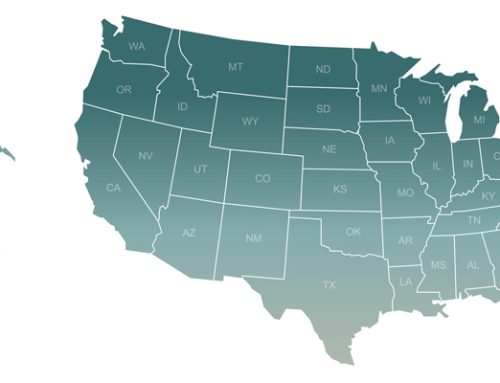FASB issues ASU on leases between entities under common control
On March 27, 2023, FASB issued Accounting Standards Update (ASU) 2023-01, Leases (Topic 842): Common-Control Arrangements.
Basic Summary
The two issues addressed in the ASU are effective for fiscal years beginning after Dec. 15, 2023, including interim periods within those fiscal years. Early adoption is permitted.
The two issues addressed are:
- Terms and conditions to be considered when classifying and accounting for leases between entities that fall under common control.
Private companies and not-for-profit organizations (that are not conduit bond obligors) have a practical expedient to use the written terms and conditions of a common-control arrangement to determine whether a lease exists and, if so, the classification of and accounting for that lease.
A private company that elects the practical expedient would be required to use only the written terms and conditions of a common-control arrangement to determine whether a lease exists and how it should be classified and accounted for. This could be applied on an arrangement-by-arrangement basis without having to consider legal enforceability.
If there are no written terms and conditions of a common arrangement between, then they could not elect the practical expedient and must consider the ASC 842 provisions, as applicable for other arrangements.
Entities are permitted to document any existing unwritten terms and conditions of a common-control arrangement before the first financial statements are available to be issued in accordance with the practical expedient.
- Accounting for leasehold improvements.
All entities (including public companies) are required to amortize leasehold improvements associated with common-control leases over the useful life (to the common-control group) of the underlying asset.
Leasehold improvements are typically amortized over the shorter of the remaining lease term or the useful life of the improvements. Private company stakeholders are understandably concerned that this treatment may result in financial reporting that could misrepresent the structure of the deal and fail to recognize the transfer of value between the common-control entities when the lessee no longer controls the underlying asset.
This ASU requires leasehold improvements in common-control arrangements to be amortized by the lessee over the useful life of the improvements (to the common-control group), with no consideration of the lease term as long as the lessee controls the underlying asset.
It’s important to note that leasehold improvements remain subject to the impairment guidance in ASC 360, Property, Plant, and Equipment.
Practical Application
Private companies encounter challenges as they define legally enforceable terms and conditions of a common-control arrangement. Because common-control arrangements often lack adequate detail and are subject to change, they often create complexity and increase costs associated with the analysis.
Since there may be economical differences in leasehold improvements associated with leases between common-control companies as compared to other leases, the FASB voted to require a lessee in a common-control lease arrangement to amortize leasehold improvements over the economic life of those improvements, without consideration of the lease term, if it continues to control the use of the underlying asset through a lease.
However, the sublessee must amortize the leasehold improvements over a period limited to the lease term between the lessee and unrelated company if:
- Lessee obtains control of an underlying asset through a lease with an unrelated party outside of the common control; and
- Subleases the asset to a company under common control.
A lessee that no longer controls the use of the underlying asset would account for the transfer of the asset as an adjustment to equity, consistent with the treatment of transfers of assets between common-control companies.
Improved and Simplified Guidance
The final ASU is designed to improve lease guidance on related-party arrangements between entities under common control.
Existing requirements have essentially been simplified by reducing the need for certain disclosures and other qualitative assessments, while still preserving the financial statement users’ ability to assess the leases related to common-control arrangements.
For private companies structuring common-control lease terms and conditions, questions will arise about:
- Month-to-month leases
- How to technically determine and classify “lease term” under ASC 842
Consult an advisor for support with these and any other questions.
Learn More
FASB’s amendments to ASC 842 offer simpler guidance for common control arrangements and provide a practical expedient for lessees to account for leases in common arrangements without considering legal enforceability.
A lessee is now able to use the written terms and conditions of an arrangement to help determine if it is a lease or not and would have greater flexibility in amortizing leasehold improvements within common-control arrangements.
When implementing these changes, it is important to consider the transition and adoption methods that are available.
Consult a professional advisor with experience in ASC 842 to ensure compliance with the most recent standards.
Frequently Asked Questions
Which transition and adoption methods should be used in connection with the Written Terms and Conditions portion of ASC 842?
If the practical expedient is being adopted along with ASC 842, the same transition method must be used, otherwise the following adoption methods may be used:
- Prospectively to all lease arrangements that commence on or after the date of adoption of the final ASU, or
- Retrospectively to the beginning period in which ASC 842 is applied for arrangements that existed as of the adoption of date of the final ASU.
Which transition and adoption methods should be used in connection with the Accounting for Leasehold Improvements in Common-Control Arrangements portion of ASC 842?
If the practical expedient is being adopted along with ASC 842, the same transition method could be used, or any of the following adoption methods may be used:
- Prospectively to all new leasehold improvements recognized on or after the date the entity first applies the amendments in the final ASU
- Prospectively to all new and existing leasehold improvements recognized on or after the date that the entity first applies the amendments in the final ASU. Any remaining balance of leasehold improvements is then amortized over their remaining economic life as of that date.
- Retrospectively to the beginning period in which ASC 842 is applied for leasehold improvements that existed as of the date of adoption of the final ASU. Any leasehold improvements that otherwise would not have been amortized should be recognized through a cumulative-effect adjustment to opening retained earnings at the beginning of the fiscal year of adoption.





